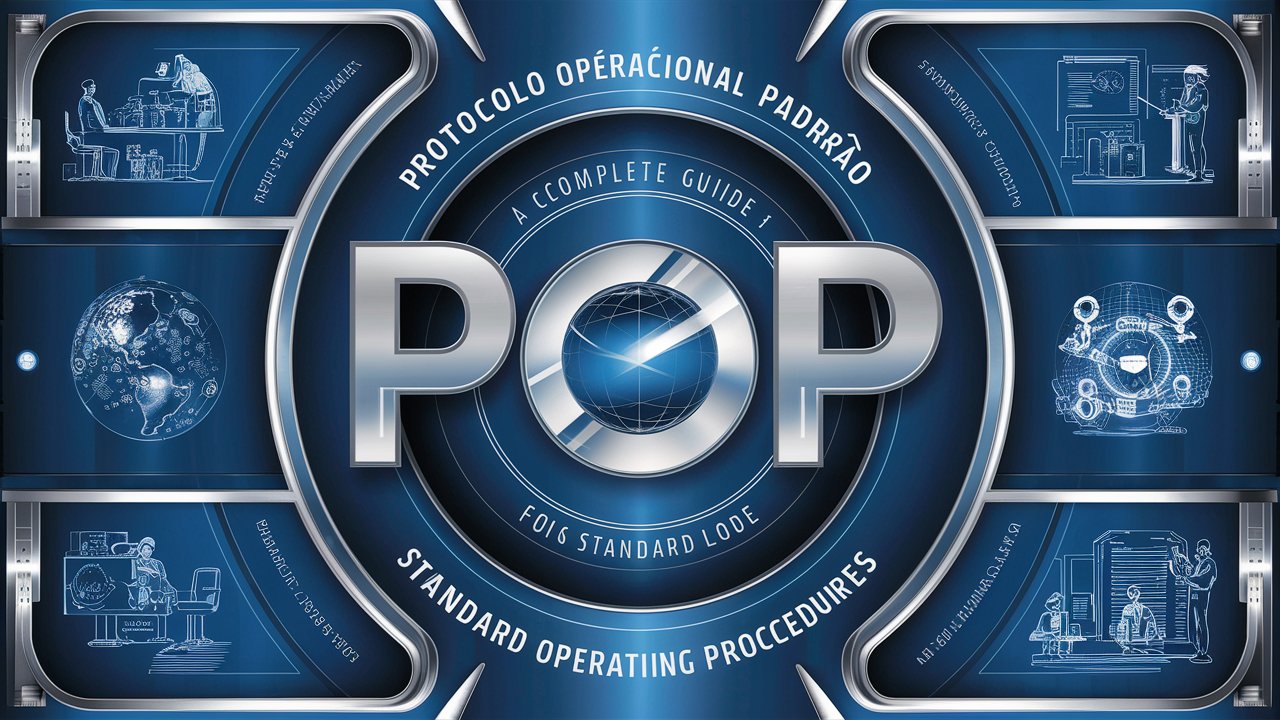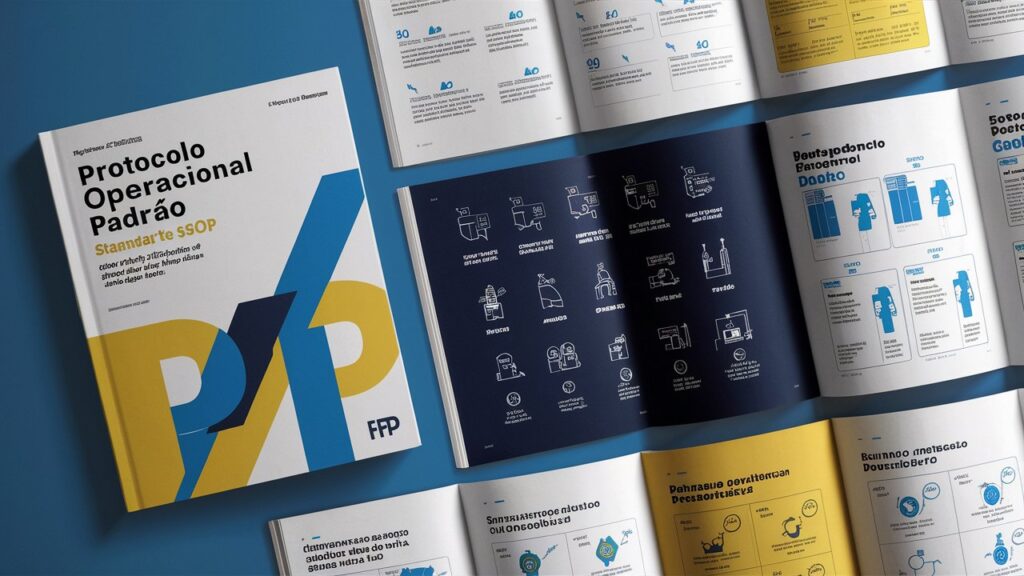A Protocolo Operacional Padrão (POP), also known as a Standard Operating Procedure (SOP), is a structured document that outlines step-by-step instructions to ensure that tasks and processes are carried out consistently and effectively. Organizations across industries—from healthcare to manufacturing, logistics, and customer service—rely on POPs to improve productivity, maintain compliance, and ensure quality control. A well-structured POP provides clarity to employees, reduces errors, and creates a reliable framework for efficiency and operational excellence.
The Importance of Protocolo Operacional Padrão in Organizations
Implementing a Protocolo Operacional Padrão is essential for ensuring operational uniformity. Without standardized procedures, organizations risk inconsistency, inefficiency, and non-compliance with industry regulations. POPs not only guide daily activities but also support training processes, internal audits, and risk management. Moreover, POPs enhance organizational culture by aligning all team members with the same expectations and workflows.
Key Characteristics of an Effective Protocolo Operacional Padrão
To be truly effective, a POP must be:
-
Clear and concise – Written in simple language, avoiding ambiguity.
-
Standardized – Applicable to all relevant employees and departments.
-
Accessible – Easily available in print or digital form.
-
Updated regularly – Reflecting current industry practices, technology, and regulations.
-
Practical – Providing step-by-step guidance that can be realistically followed.
By incorporating these characteristics, a POP becomes a powerful tool that bridges the gap between policy and execution.
Steps to Develop a Protocolo Operacional Padrão
1. Identify the Purpose of the POP
Every POP must begin with a clear definition of its purpose. This explains why the procedure is necessary and how it contributes to organizational goals.
2. Define the Scope and Applicability
The scope outlines where and to whom the POP applies. For instance, a hospital may develop a POP specific to handling patient records, while a manufacturing company might create one for quality inspections.
3. Gather Detailed Process Information
Before writing, all relevant data and process details must be collected through interviews, observations, and documentation review. This ensures that the POP is comprehensive and aligned with actual practices.
4. Write Step-by-Step Instructions
Each instruction must be written in sequential order, ensuring clarity. Visual aids such as flowcharts, checklists, or diagrams can enhance understanding.

5. Validate and Review the POP
Before implementation, the POP should be reviewed by supervisors and tested by employees to ensure its practicality and accuracy.
6. Train Employees
Training is crucial to guarantee that employees understand and apply the POP correctly. Interactive sessions and demonstrations can reinforce learning.
7. Monitor, Evaluate, and Update
Processes evolve over time. Regular audits and feedback mechanisms ensure that the POP remains relevant and effective.
Benefits of Implementing Protocolo Operacional Padrão
Improved Efficiency
With clear step-by-step guidelines, employees perform tasks faster and with fewer mistakes.
Consistency and Quality Control
Standardization ensures that results are consistent, meeting quality standards every time.
Regulatory Compliance
Many industries, such as pharmaceuticals and healthcare, require documented procedures to comply with legal standards.
Employee Training and Onboarding
POPs act as training tools, helping new employees quickly adapt to organizational practices.
Risk Reduction
By following established protocols, organizations minimize operational risks and workplace accidents.
Examples of Protocolo Operacional Padrão in Different Industries
Healthcare
Hospitals and clinics use POPs to standardize patient care, medication administration, sterilization of equipment, and emergency response protocols.
Manufacturing
Factories implement POPs for machine operation, safety checks, quality inspections, and supply chain management.
Food and Beverage
Restaurants and food companies apply POPs for hygiene practices, food preparation standards, and waste management.
Corporate Offices
Administrative POPs guide document handling, IT security, human resources policies, and customer service interactions.
Logistics and Transportation
Standard procedures in logistics ensure efficient inventory management, packaging, and delivery tracking.
Challenges in Implementing Protocolo Operacional Padrão
Although POPs bring immense value, some organizations face challenges such as resistance from employees, lack of training, and outdated documentation. To overcome these obstacles, leaders must emphasize the benefits of POPs, engage employees in the creation process, and establish continuous improvement systems.
Best Practices for Maintaining Protocolo Operacional Padrão
-
Regular Review Cycles – Schedule periodic evaluations to keep POPs updated.
-
Employee Involvement – Encourage feedback to identify practical issues.
-
Digital Accessibility – Use management software for easier updates and access.
-
Audit Integration – Incorporate POP reviews into internal and external audits.
-
Clear Ownership – Assign responsibility for maintaining and updating each POP.
Conclusion
A Protocolo Operacional Padrão (POP) is not just a document; it is a cornerstone of efficiency, consistency, and compliance within organizations. By developing, implementing, and maintaining effective POPs, businesses ensure smooth operations, reduce risks, and foster a culture of accountability. In today’s competitive world, organizations that embrace POPs gain a significant advantage by aligning their workforce with structured, reliable, and standardized processes.
Frequently Asked Questions (FAQ) about Protocolo Operacional Padrão
1. What is a Protocolo Operacional Padrão (POP)?
A POP is a standardized document that provides step-by-step instructions for performing specific organizational tasks.
2. Why is a POP important in organizations?
It ensures consistency, compliance, efficiency, and quality across processes, reducing risks and errors.
3. How often should a POP be updated?
POPs should be reviewed and updated regularly, typically every 6–12 months, or whenever processes change.
4. Who is responsible for writing a POP?
Usually, process managers, supervisors, or compliance officers draft POPs with input from employees who perform the tasks.
5. Can POPs be applied to all industries?
Yes, POPs are versatile and can be applied across healthcare, manufacturing, logistics, food services, corporate offices, and more.

